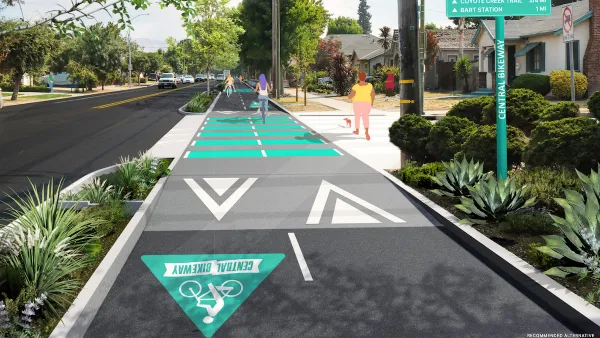New York mayor Michael Bloomberg's widely-touted plan for a greener city have left out the major energy consumer in Manhattan: the thousands of buildings not owned by the city.
"The streams of traffic crashing against the city's various choke points may be New York's most iconic image of waste and pollution. But, in fact, the city's buildings – its defining physical elements –account for the bulk of the New York's energy use and carbon emissions. The city's 750,000 buildings – residential, commercial and government -- are responsible for nearly 80 percent, or 47 million metric tons, of New York City's total carbon dioxide output. That's the equivalent of 150 Empire State Buildings worth of greenhouse gas being pumped annually into the atmosphere – hanging heavily over its economy, landscape and environment."
"Buildings in the city's commercial sector, alone, which includes offices and retail space, kick out 25 percent of all emissions (transportation, by contrast, accounts for 23 percent)."
"Despite this, Bloomberg's ambitious PlaNYC2030 is largely silent on reducing pollution from buildings other than those built or owned by the city. It says virtually nothing about commercial buildings. Can New York City expect to meet its goal of reducing overall emissions by 30 percent by 2030 if it does not move aggressively – like London – to encourage and, in certain cases, impose efficiency standards on commercial property, one of its largest polluting sectors?"
FULL STORY: Cleaning Up New York’s Buildings

Planetizen Federal Action Tracker
A weekly monitor of how Trump’s orders and actions are impacting planners and planning in America.

Silicon Valley ‘Bike Superhighway’ Awarded $14M State Grant
A Caltrans grant brings the 10-mile Central Bikeway project connecting Santa Clara and East San Jose closer to fruition.

Amtrak Cutting Jobs, Funding to High-Speed Rail
The agency plans to cut 10 percent of its workforce and has confirmed it will not fund new high-speed rail projects.

California Set to Increase Electric Truck Chargers by 25%
The California Transportation Commission approved funding for an additional 500 charging ports for electric trucks along some of the state’s busiest freight corridors.

21 Climate Resilience Projects Cancelled by the EPA
The federal government has pulled funding for at least 21 projects related to farming, food systems, and environmental justice to comply with one of Trump’s early executive orders.

Trump Executive Order on Homelessness Calls for Forced Institutionalization
The order seeks to remove legal precedents and consent decrees that prevent cities from moving unhoused people from the street to treatment centers.
Urban Design for Planners 1: Software Tools
This six-course series explores essential urban design concepts using open source software and equips planners with the tools they need to participate fully in the urban design process.
Planning for Universal Design
Learn the tools for implementing Universal Design in planning regulations.
Yukon Government
Caltrans
New Jersey Institute of Technology
Mpact (founded as Rail~Volution)
City of Camden Redevelopment Agency
City of Norman, Oklahoma
City of Portland
City of Laramie


























